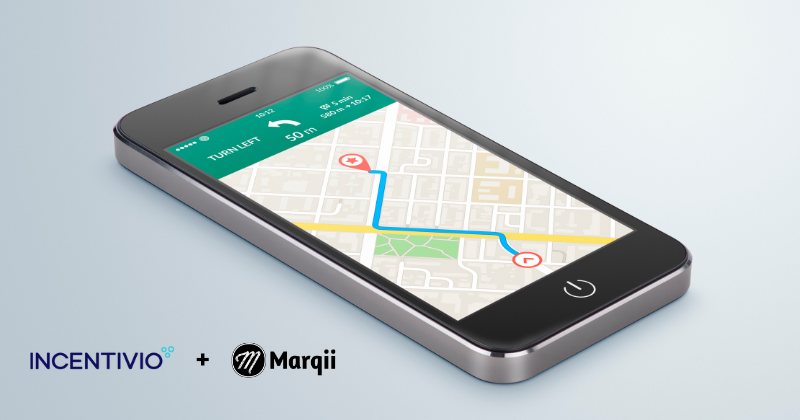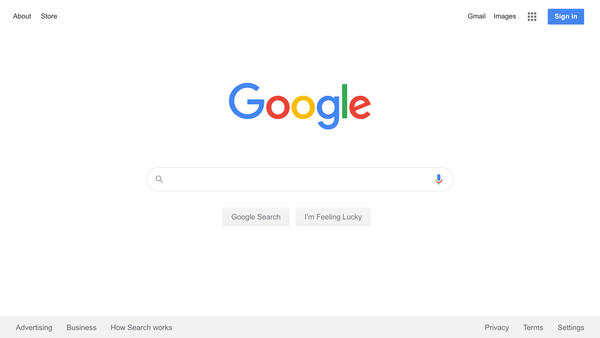Google Maps vs. Apple Maps for Restaurants
When it comes to competing in the restaurant industry, visibility is key. For first-time visitors, guests searching for their next online order, or return visitors, being easily found on the maps that everyone uses daily is important. Google Maps and Apple Maps are often the first steps in the guest journey, serving as the go-to navigation tools for millions of users. This makes them prime real estate for your restaurant's marketing and SEO strategy.
But which one should you focus on? We got together with our friends at Incentivio to break down the pros and cons of each and explore how you can optimize your marketing and online efforts for maximum impact.
Google Maps
Pros of Google Maps for Restaurants
- Global Usage: Google Maps is the undisputed champion of navigation apps, with more than 1 billion active users. This means your restaurant is more likely to be discovered by a broader audience.
- Comprehensive Features: Google Maps offers a wealth of features that can boost your restaurant's visibility. From detailed business information to user reviews and photos, it provides potential diners with everything they need to make a dining decision.
- Integration with Google My Business (GMB): GMB is a powerful tool for restaurant SEO. It allows you to manage your online presence across Google, including Search and Maps, ensuring consistency and accuracy.
- User Reviews: Google Maps integrates seamlessly with Google Reviews, providing a platform for customers to leave feedback. Positive reviews can significantly enhance your restaurant’s reputation and search rankings, and give you a chance to build loyalty.
- Rich Insights: Google Maps offers valuable insights and analytics, helping you understand how customers interact with your listing. This data can be useful as you create your digital guest journeys and form your marketing strategy.
Cons of Google Maps for Restaurants
- Competition: The popularity of Google Maps means high competition. Standing out among the volume of restaurants can be challenging, requiring regular updates and engagement.
- Algorithm Changes: Google frequently updates its algorithms, which can affect your restaurant’s ranking. Staying on top of these changes requires ongoing effort and adaptability.
- Review Management: While positive reviews are great, negative reviews can impact your reputation. Managing and responding to reviews promptly is crucial but can be time-consuming.
Luckily there are tools to help with these. Marqii being one of those helpful tools.
Apple Maps
Pros of Apple Maps for Restaurants
- iOS Integration: Apple Maps is deeply integrated into the iOS ecosystem, making it the default navigation app for iPhone users. Thanks to their loyal customer base, this can drive significant traffic from Apple device users, and can provide a great platform for your app if you have one.
- Less Competition: Compared to Google Maps, Apple Maps has fewer listings, which can make it easier for your restaurant to stand out.
- Siri Integration: Apple's voice assistant, Siri, uses Apple Maps for navigation. Optimizing your listing can make it easier for customers to find you via voice search.
- Yelp Reviews: While Apple Maps doesn’t have their own reviews platform, they directly integrate with Yelp so that reviews can still play a role in your guest journeys.
Cons of Apple Maps for Restaurants
- Lower Market Share: Despite its popularity among iOS users, Apple Maps has a smaller user base than Google Maps, limiting your reach.
- Fewer Features: Apple Maps lacks some of the comprehensive features offered by Google Maps, such as detailed business insights and analytics.
- Limited Customization: Apple Maps offers fewer options for customizing your listing, which can be a drawback if you're looking to showcase unique aspects of your restaurant.
Optimizing Your Restaurant Listings: Best Practices
Whether you're team Google or team Apple, optimizing your restaurant listings is essential to your guest journeys and marketing, especially when it comes to SEO and discoverability.. Here’s how you can make the most out of both platforms:
Optimizing for Google Maps
- Claim and Verify Your Listing: Ensure your business is listed on Google My Business and verify it. This step is essential for managing your information and appearing in search results.
- Complete Your Profile: Fill out every section of your GMB profile. Include your address, phone number, website, hours of operation, and a detailed description of your restaurant.
- Use Keywords: Incorporate relevant keywords, like "best pizza in Austin," in your business description and posts. This helps Google understand your business and improve your search rankings.
- Add High-Quality Photos: Visual appeal matters. Upload high-quality photos of your restaurant, menu items, and ambiance. Encourage customers to do the same.
- Manage Reviews: Respond to reviews (and we mean all of them), thanking positive reviewers and addressing any concerns raised in negative reviews.
- Make Regular Updates: Keep your listing updated with any changes, such as new menu items, special offers, or events. Regular updates signal to Google that your business is active and relevant. "On top of providing fresh updates to Google, consistently showcasing new offers can help old customers re-engage with your restaurant", said Sash Dias, COO of Incentivio.
- Include Relevant Links: Link out to your website, social channels and most importantly, your preferred online ordering platform to help drive traffic and increase order volume.
Optimizing for Apple Maps
- Claim Your Listing on Apple Maps Connect: Similar to GMB, Apple Maps Connect allows you to claim and manage your business listing. Verify your information to ensure accuracy.
- Provide Complete Information: Fill out all the details about your restaurant, including contact information, hours, and website. Accurate and complete information improves your visibility.
- Use Correct Categories: Select the most relevant categories for your restaurant. This helps Apple Maps accurately categorize your business and match it with relevant searches.
- Manage Reviews: As mentioned before, Apple Maps doesn’t have a dedicated review system, it pulls reviews from Yelp. Stay on top of reviews and respond to all of them to show customers you care about their feedback.
- Regular Updates: Periodically check your listing for accuracy and update any changes. Consistency is key to maintaining a reliable presence.
- Include Relevant Links: We don’t have to remind you how important it is to make the customer journey from search to order as easy as possible. Just like Google, including links to your website, socials, and online ordering sites. Don’t forget this step. "Every extra hurdle is a chance for a potential customer to decide against ordering from you," said Dias. "By having this option easily accessible and part of the Apple Maps Connect, you lower the barrier for entry and make it easier on your customers."
Making the Right Choice
Just kidding - this isn’t actually about choosing between Google Maps and Apple Maps. It’s about leveraging both platforms to maximize your restaurant’s visibility and reach, and to allow your guests to begin their digital journey with you on the map app of their choice. By optimizing your listings on both, you can tap into different user bases and ensure that no potential customer misses out on finding you.
Remember, restaurant SEO is an ongoing process. Stay engaged, keep your information up to date, and continue to delight your customers both online and offline. This means controlling the customer journey from first search to first order and beyond.
"The process of winning a customer does not end at the conclusion of their first order. Winning a customer involves tracking their progress as they proceed through the guest journey and continue building a relationship with you. By taking the long view of the customer relationship, you increase the lifetime value of your customers,” said Dias. “Our data has shown that return visitors are easier to reach with marketing efforts while having 3-4x the spend of normal customers."
If all of this seems like a hassle, consider tools to help you stay on top of your business listings, reviews, marketing, guest loyalty, online ordering, and more.
At Marqii, we’re all about making things easier for you. We can help you optimize your listings, manage reviews, and boost your restaurant’s online presence through our easy dashboard.
If you’re not sure where to start with optimizing your guest journeys, online ordering, and restaurant marketing, our friends at Incentivio can help. Contact them today to get started!





